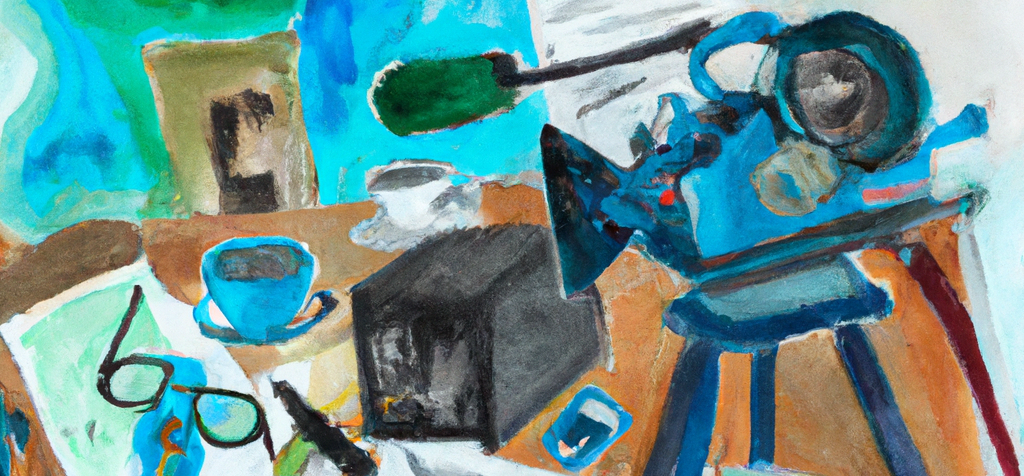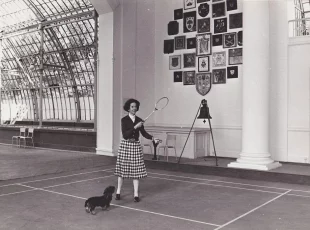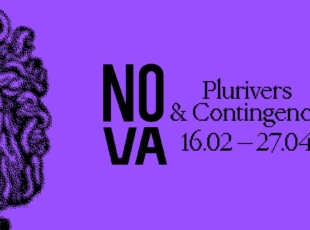Reform of the ‘artist status’, a second-rate stop-gap?

Article author :
Don’t say ‘artists’ anymore, but ‘arts workers’. Set in motion on October 1, 2022, the aim behind the reform of the departed status is to alleviate the obvious precarity of artists. The review took full effect last January 1, with the establishment of the new Working in the Arts Commission. But the reform has raised as many concerns as it has hopes amongst the sector’s stakeholders.
Let’s be clear from the outset: investigating the recent working in the arts reform is no easy matter. Juridically speaking, even the best legal expert in employment law would take hours to clarify the major changes between the former and the new system. The editorial aim behind the writing of this case file was not to provide an exhaustive guide for artists hoping to discover whether or not they meet the new working in the arts benefit access conditions. On this aspect, a well-stocked toolbox can be found at the end of this article. The wish was rather to question those who, through their arts profession or their engagement on questions of social and labour law, have an informed and critical perspective regarding the reform and the issues it raises. There was also the desire to lend a sympathetic ear to a class of artists almost completely overlooked owing to the diversity of the practices they are working with: digital artists.
March 6. 17.00. The European House of Authors. Brussels. Wearing relaxed end-of-the-day expressions, some fifty or so people are packed together into a room with a backlit screen. They have all made their way here to attend an information session given by the Amplo social bureau for artists. ‘As you are certainly aware, given your presence today, the much-talked of artist status has undergone a significant overhaul since the reform,’ is the opening statement by Anaïs Pirenne, a consultant for Amplo. ‘The goal over the next hour is to go through the functioning of the new system as well as the procedures to obtain and renew your working in the arts certificate (ATA).’
As the presentation rolls on, eyebrows start to furrow. The subject is complex, the info to absorb comes at a relentless pace. ‘It is necessary to view the new system in two distinct stages,’ continues the Amplo representative. ‘First of all, there is the application for the certificate to be submitted to the new Working in the Arts Commission, and to be renewed every five years. This is the only pass you can use to apply for benefit from the Office National de l’Emploi (ONEM), to be repeated every three years.’ Amongst those in attendance, each person has prepared questions specific to their own situation. Renewal conditions, the calculations to access benefits, non-compensable days, etc. Several of the questions raised by the artists remain heavy going, even for the panel of experts present. In an attempt to respond to the numerous questions raised by artist workers as a whole, a few months ago, Amplo embarked on a full-blown tour of information sessions across the country. Dozens of information meetings which, for the most part, were packed out. Symptomatic of a shared sentiment of incomprehension for these (future) artists whose working regimes have always been particular.
When we said ‘status’, about that…
The ill-named ‘artist status’ has never been a status, strictly speaking, but rather a legal category separate from that of self-employed, employee and civil servant, and which guarantees the artist social protection by means of unemployment benefit as long as certain conditions have been met. One of the major protections tied to the status means avoiding the degressive unemployment allowance other work regimes are subject to.
The arts-cultural milieu has for decades been voicing its dissatisfaction and calling in politicians to make changes which would enable all artists to better manage the precarity endemic to their profession. During the pandemic, they mobilised once more. The Vivaldi coalition government at the time committed itself to working on a reform. ‘Twenty years after the introduction of the ‘artist status’, it constitutes a major step forward and a necessary updating for better social protections for workers in the arts,’ we read in a release published on the official site of the Minister of Employment, Pierre-Yves Dermagne (PS).
Amongst these improvements let us highlight a simplification of the procedures for being granted the status, in particular for debutant artists, the inclusion of more arts-technical and arts support dedicated activities, which had previously been excluded from the status, better social protection in terms of illness or parenting, the Working in the Arts Commission, a new body representing artists and given the responsibility of issuing the much-discussed ATAs. Let us further note the brand new website rolled out by the SPF Social Security, Working In The Arts (WITA), which is now centralising the administration related to establishing and submitting an application file.
Trouble is, since its coming into effect, considerable criticism is being levelled at it from the artistic milieus: a lack of objective criteria to accept the applicants’ files, the absence of appeals procedures, an administrative complexity which has carried over into this new system, a tightening up of renewal conditions, inaccessibility of the Commission despite the establishment of a direct hotline. Several trade unions are also looking closely into the measure, which risks capping salaries.
Perfect representation doesn’t exist
To establish ‘who is an artist and who isn’t’, the aim of the reform was to outsource the ONEM’s decision to an independent body whose representation would be a better match with the realities of the sector. With 50% of the representatives being from the arts sector (nearly all artists), with the other half-including representatives from trade unions, employers’ associations, administrations, and also Belgium’s Communities, the freshly minted Working in the Arts Commission processed the very first applications merely a few weeks ago.
‘At this level, the reform makes sense for me,’ declares Dewi Brunet. The visual artist, active in the digital arts, amongst other fields, owing to his use of folding techniques and who we met through a previous article on kingkong, tells us that he feels reassured by the Commission’s promises on representation. Nonetheless, he does not know to what extent he mirrors in real terms opinions across all the arts domains. ‘I know that actors and the performing arts are more numerous, for example. It’s certainly linked to the fact that visual artists are less inclined to think about forming an association or unionising, and that our practices are very diversified. Stage and performing artists have more uniform realities.’
Dewi is not the only one to have found out more about the reform on several occasions, but he remains bewildered that he cannot obtain more information regarding the representatives. A member of the Commission, who wishes to remain anonymous, explains in this regard that a press pack has been prepared by the ministry, including the background and CVs of each member. ‘Initiatives in terms of communicating with potential applicants will be ongoing. Everything is behind schedule since the debut of the Commission. The intake and processing of application files is also undergoing a bottleneck effect. But the public service is also planning for the opening of a staffed counter in Brussels which will enable each person to come and ask their questions in person.’
Available via the equally state-of-the-art Moniteur belge website, the list of the Working in the Arts Commission members confirms that the digital arts are not truly represented. And so, is the complete range of arts activities being represented within the Commission merely a utopian pipedream? Yes and no, is the response given by the Fédération des Arts Plastiques (FAP), a trade federation which takes digital artists under its wing. ‘Visual artists are generally multidisciplinary artists, including the digital arts. Beyond the expanded Commission, three select committees between them process the application files and consist of several fields of artistic activity. There are the audiovisual arts and music, then the performing arts, theatre and choreography, and finally the visual arts combined with literature and comic books. When an application file is submitted to the Commission, the multidisciplinary artist will have to select which activity to declare as their core area of activity. They could therefore strategically look into the composition of the select committee which will consider their case if they think that their artistic practice is a complex one to explain.’
Certain measures brought about by the reform are completely new, […] but I am amongst those who firmly believe that the eternal debate about ‘who is an artist and who isn’t’ has been relegated to the new Commission.
Anne-Catherine Lacroix, legal practitioner at the Social Rights Workshop.
‘In terms of social reform in Belgium, if you don’t say that it involves a major step forward, you are often perceived as an old moaner,’ sighs Anne-Catherine Lacroix, a legal practitioner at the Social Rights Workshop. ‘Certain measures brought about by the reform are completely new, it is true, such as placing a cohabitant or person living on their own on the same legal footing for the amount of their benefit, or the possibility of establishing a right to benefit with 156 days of work, whilst previously a minimum of 312 was required, but I am amongst those who firmly believe that the eternal debate about ‘who is an artist and who isn’t’ has been relegated to the new Commission.’
As a reminder, in the former system, it was the ONEM which took part in this debate. Artists are still haunted by these giant double-entry EXCEL tables which decided with a black cross in a white box as to whether or not their activity amounted to artist status. ‘My profession didn’t open the doors of artist status for me before the reform,’ confides Clémence*, a post-production technician. ‘In the ONEM’s tables of columns, I was recognised neither as an artist, nor as an artist technician. But nor did I fit in with the category of professions which were refused this status. Like many, when I worked with directors who I knew well enough to cover for me, I always rigged my work contracts and I was declared as chief editor to have access to this status.’ Several of his colleagues have even gone so far as to take out proceedings against the ONEM and have pleaded for the addition of their profession to the registry of comparable activities, actions which have at times led to the creation of jurisprudence.
Whilst the ONEM’s lists itemised between 70 and 80 artistic activities, the manual which the new Working in the Arts Commission now works with in order to issue ATAs is much more complete. ‘Conceptual artist, textual artist, interdisciplinary artist, etc. I am not certain that everyone will find themselves amongst these terms, but it has the merit of being more inclusive when faced with the diversity of artistic practices,’ continues Anne-Catherine Lacroix.
Confused artists seeking information
When we have our interview, the legal practitioner has left a morning on-call legal advice duty period during which she keeps a count of no less than 25 calls concerning questions about the reform. In office at the Social Rights Workshop since 2005, Anne-Catherine originally worked on matters related to employment law and unemployment insurance. She became increasingly involved with artistic employment law, and the legal practitioner is today recognized in the sector for this specialisation. ‘I started by helping artists with their requests to obtain this status or in calculating their days of work. But during the lockdowns, when the sector was completely shut down, I understood the extent to which they were completely lost as regards their rights. We made the association’s role visible on the social networks, and that was when the demand became unmanageable. Since the establishment of the Commission, artists are reporting to me that the dedicated telephone line is struggling to keep up, but since when has it been the job of the non-profit community sector to make up for the shortcomings of an administrative commission?’
In an attempt to cope with the demand, the non-profit association regularly arranges collective consultations, for which the places are rapidly snapped up. On a smaller scale, several audiovisual artists encountered during the writing of this long paper have decided to join forces in order to get to the bottom of this package of new regulations. It is they for that matter who first bring to our attention this other digital tool ‘which saves the lives of artists’, as they put it.

The online platform Dockers came into being in 2019 to assist any worker wishing to submit an application file to the ONEM and exercise their right to unemployment insurance. In concrete terms, the 100% free-of-charge tool enables people to encode their reference period and days of work in order to foresee the decisions taken by the public body. A tool which must have the capacity to evolve given the numerous exceptions to the rule to be taken into account. Amongst those driving the initiative, we come across familiar names such as Anne-Catherine Lacroix, but also that of its co-founder, Nicolas Bier. A fervent activist on issues involving the wage-earning classes, the picture editor insists on the fact that the platform is not exclusively geared towards artists. ‘In the figures, over 90% of the users are arts workers because it is the sector in which I am active and it means the tool has met the needs of artists who were looking for a more effective means of calculating their days of work. In opting for the name ‘Dockers’, I have also identified that, ideologically, our work regime is so particular that it could lead to a genuine discussion on a possible emancipation from work.’
Nicolas is here raising the issue of employment as a work institution. Before the reform, the so-called ‘artist status’ was considered by some as an unconditional immunity, even if the conditions of renewal have been subject to a nasty tightening up – the former regime demanded proof of three days of work over the previous twelve months, the new system now demands proof of 78 working days over a period of three years. ‘It was pretty unique to know that once you had obtained this status, you were as if protected thanks to a personal wage,’ continues Nicolas Bier. ‘You might even wonder if the myth of meritocracy in the workplace and the constant blackmailing to return to work were real. In broad terms, will a worker protected by an allowance ‘for life’ end up doing nothing or just messing about? It’s obviously false, ask the question of any artist to see if they have the impression they are doing nothing with their days.’ One concern nevertheless lingers on his mind as to what comes next, in other words, that the renewal is increasingly padlocked. Notably owing to the differences in the use of the particular regime between the country’s regions. ‘We must not end up in a situation of a communitisation of artists’ rights. The reform has also committed a political risk, for better or for worse.’
A number of people argue that, in the end, this reform is not a good thing for the collective struggle. ‘Everything will become very individual,’ regrets Anne-Catherine Lacroix. The question which may well come to pass is also that of administrative red tape. ‘Is it of that much value to me to renew my certificate every five years, my benefit application every three years. Previously, few applicants admissible to the artist regime wondered if it was really worth it in comparison with the general system which also included a monitoring of unemployed people, and a lower and degressive allowance. But today, certain people are genuinely asking themselves this question depending on their personal or family situation, on their incomes.’ ‘The other fear,’ adds Nicolas Bier, ‘is that people become so worn out of having to always fit in, to prove everything to match up with the system, that they become self-employed. And that will be the end of real collaborations within the arts sectors, apart from in terms of equipment. But I also believe that the reform has triggered a deeper reflection on the way in which social law is reformed in Belgium.’
The artists, for their part, do not feel legitimate and anyway feel that they have to improvise something, that they have to hide some aspects and reveal others so that they tick the right boxes.
Rémy Grailet, director
This is, in essence, one of the remarks made by Rémy Grailet. The Brussels director has for a few years been self-producing a documentary on the various reforms of the artist status the country has been through. ‘My starting point is to say that are other reforms are coming; it’s the eternal back-and-forth between the legislative and the real. And I have to say that I have encountered many well-intentioned protagonists, be they politicians, artists’ representatives, administrations, but this complexity means that consensus remains difficult. The artists, for their part, do not feel legitimate and anyway feel that they have to improvise something, that they have to hide some aspects and reveal others so that they tick the right boxes.’
This reform also raises issues as to the social protection of other domains of activity whose precarious working conditions are comparable to those of artists. Invisible work, unpaid work and waiting between two work projects are realities which journalists and researchers also have to deal with.
Useful resources
Are you looking for more fuller information and wish to be guided in obtaining and retaining this new ‘arts worker’ status? The kingkong editorial team has compiled a small package of useful resources in ‘toolbox’ mode.
If your brain is properly secured, the legal texts published on the Moniteur belge are available on the dedicated website, Working in the arts. Quite far-sighted in terms of the numerous questions asked by (future) artists who have the status, the public service has also made available a direct telephone line which can be reached from Monday to Friday, from 08.30 to 17.00: +32 (0)2 509 90 91.
Thanks in particular to the work carried out by the legal practitioner Anne-Catherine Lacroix, who has contributed to this case file, the Atelier des Droits Sociaux has in particular published a series of articles which are highly pertinent and pedagogical over the course of the reform, but the non-profit association has also worked on a complete guide to the new regulations under the new system. The document is currently being rewritten. Its updated version should be available at the beginning of April.
To encode your contracts, pre-visualise your unemployment case file, but above all count your days of work and discover how they are converted at the ONEM, the Dockers non-profit association has developed a platform for administrative management and social rights assistance.
The comic book authors and illustrators federal trade association (ABDIL) has published a comparative table which is very concise as to the before/after reform to understand in concrete terms what has changed between the departed artist status and the new arts worker status.
The Amplo FAQ is pretty well stocked and responds to the most frequently asked questions involving workers in the arts.
*First name changed
A story, projects or an idea to share?
Suggest your content on kingkong.




